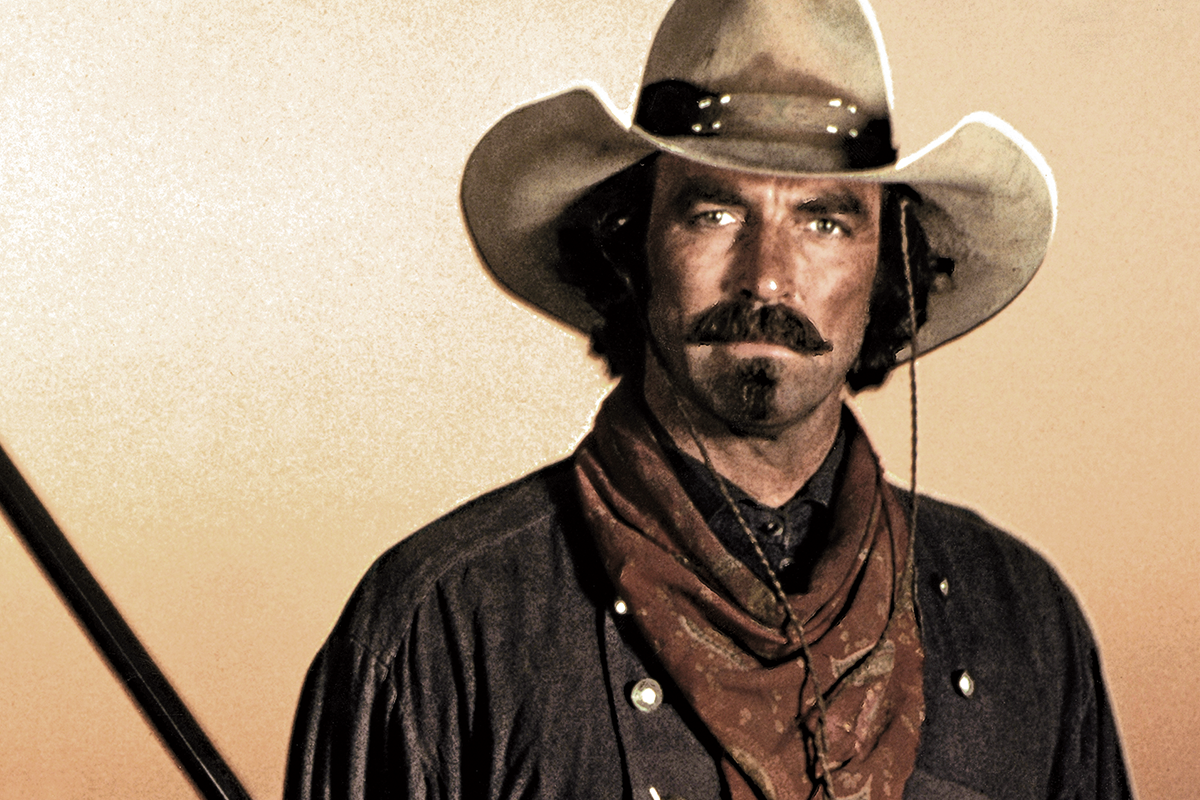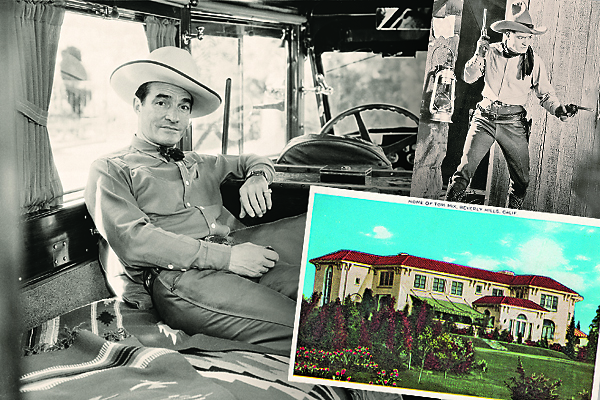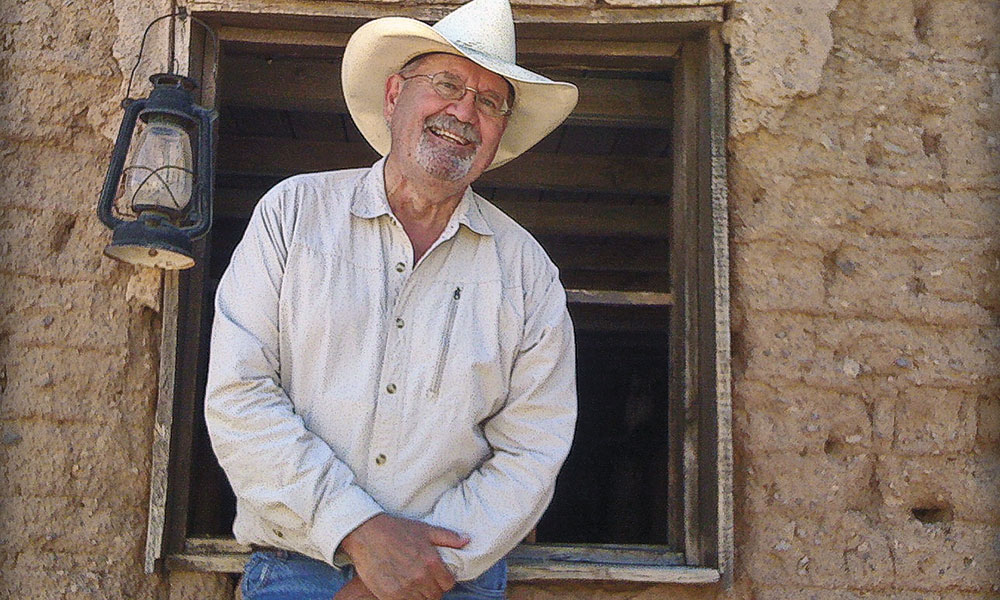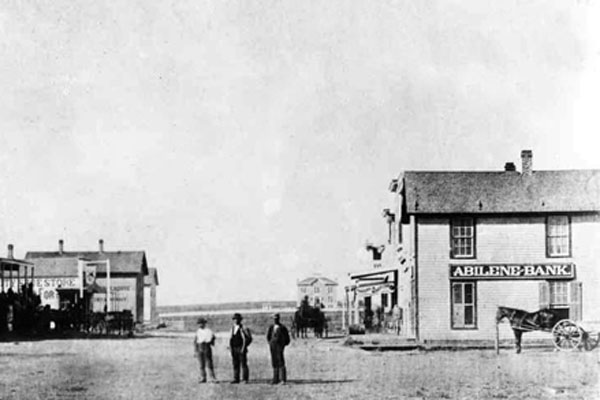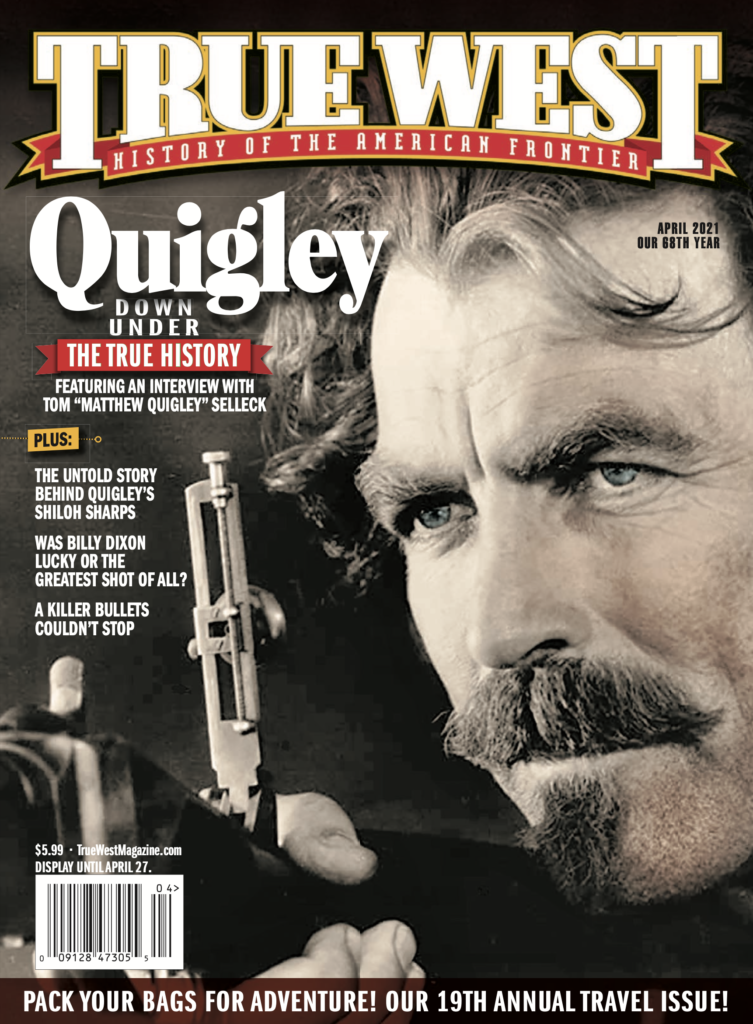The renowned film and television star reflects on his 50 years in Westerns and his hope that he will ride the range again on the silver screen.
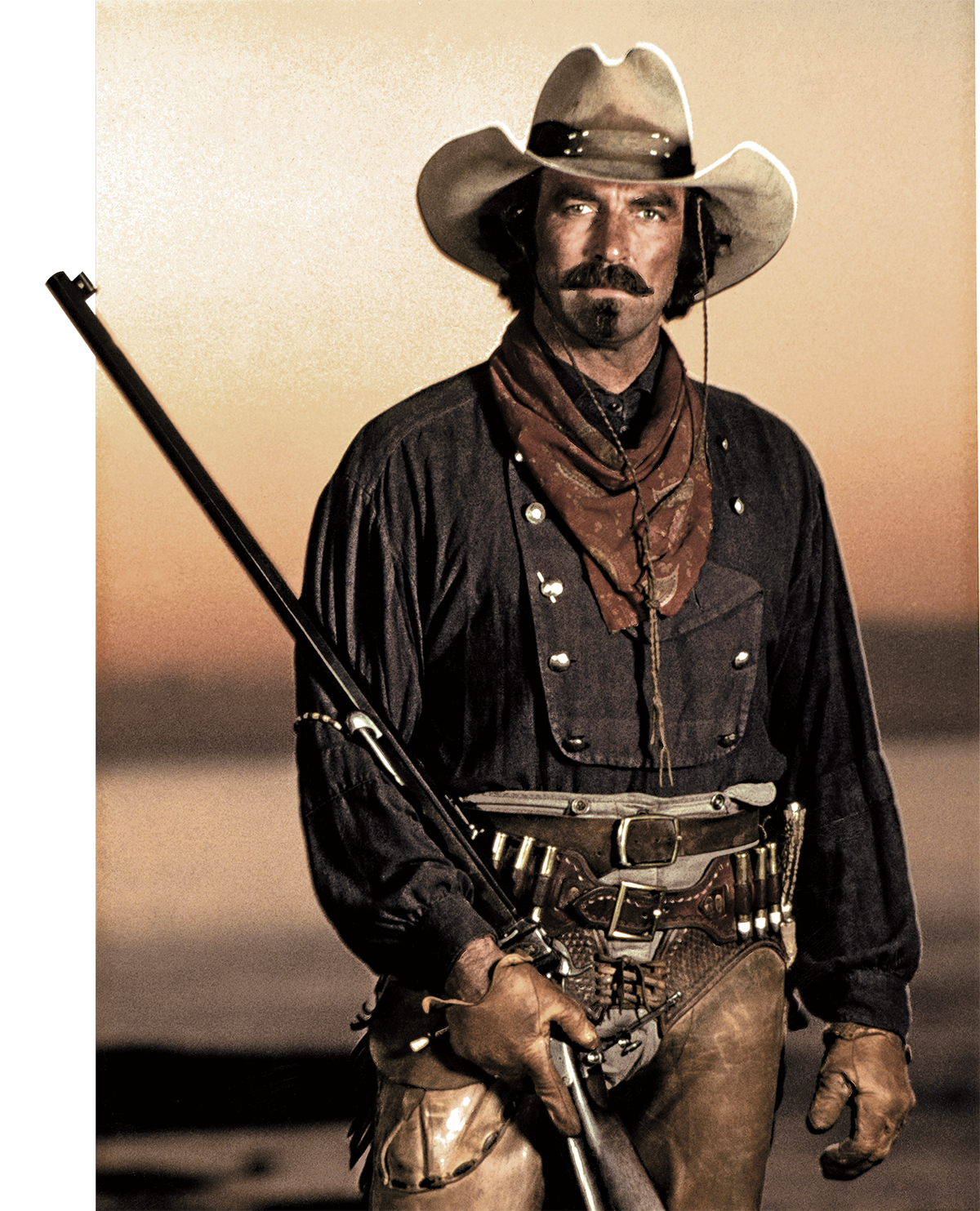
A 1969 episode of the Western series Lancer opened with an unmustachioed but unmistakable Tom Selleck cheerfully harassing a one-handed lawman. It was just a bit, but it was a start for an actor who would become nearly the lone standard- bearer for Westerns in the 1990s and 2000s, much as Clint Eastwood had been in the decades before, and John Wayne had before him. Coincidentally, later a clean-shaved Sam Elliot appears just long enough to have his horse stolen. “Sam and I were already good friends,” Selleck says. “Fox had a new talent program, like the old studio system; were in it. I’ve always said Sam was more formed in those days, [knowing] exactly what he wanted. I was still learning the craft.
“Other than a Muriel Cigar commercial, where I got on a horse for about three seconds,” it would be a busy but Westernless decade before Selleck would saddle up again. A miniseries based on Louis L’Amour’s The Sacketts was in preparation, about three brothers uniting after the Civil War. Two brothers had already been cast: Sam Elliot and Jeff Osterhage. Writer/Producer Jim Byrnes recalls, “Director Robert Totten wanted Buck Taylor for the part. Tom came in five times to read, and Bob still wanted Buck. I said to Bob, ‘This guy is going to be a star.’”
“I’m glad I was honest with Bob because most actors lie,” admits Selleck. “He asked, can I ride a horse? I told him, ‘No, but I’m not afraid of them. I’m a good athlete, and I can learn.’ All of us finalists had our audition at the Randall Ranch. He had us get on a horse and ride over to the grandstand. And in the grandstand were Glenn Ford, Ben Johnson, Sam Elliott, Jeff Osterhage and Bob Totten.” Selleck won the role, and Taylor played a cowboy who made plans to kill Selleck’s character the moment they met.
“Bob Totten left a big impression on me. He commanded a lot of respect. He’d done more Gunsmokes than almost anybody. Totten assembled a Western stock company like John Ford had, people who did one-day bit parts: Slim Pickens, Pat Buttram and Jack Elam.” And then there were the stars. “Glenn Ford was an actor ahead of his time; his acting style was very naturalistic, like early Brando. Ben Johnson would be embarrassed if I called him a mentor, but he was—everybody looked up to Uncle Ben. He spent a lot of time with us, taught Jeff and me how to rope—and he was a world champion roper. I got to know Louis L’Amour well. Louie was on the set every day. I got hooked on Westerns with The Sacketts.”
The wrap party was memorable. Totten took off one of his boots, “poured Jack Daniel’s in it, said, ‘This is tradition: you need to drink out of this.’ But the big thing out of that party was Sam, Jeff, Ben and I all said if we ever get a chance to do this again, we’re there. And that was the germination of Shadow Riders.” In 1980, Selleck was cast in Magnum P.I., and became a major star, playing the Hawaiian- based detective for eight seasons. But he always made movies on hiatus, and in 1982, the three brothers and Ben were back, now called the Travens rather than the Sacketts, to avoid litigation. “Louis created a new book for us, the Travens, and it was such a thrill when the book came out, to see us— Sam, Jeff and I—pictured on the back.”
Magnum ended in 1988. “The script by John Hill, Quigley Down Under, had a bunch of fingerprints on it—Steve McQueen, Sean Connery—but it didn’t get made, and I absolutely loved it.”
Quigley is the story of an American cowboy, maybe the best long-range shot in the world, who comes to Australia to work for a rancher named Elliott Marston (Alan Rickman). Quigley rebels when Marston wants him to slaughter Aboriginal people, takes their side, and declares war on Marston. Helping him is Crazy Cora (Laura San Giacomo), who has some issues, hence her name, but rises powerfully to the occasion. San Giacomo recalls that it was her first Western, “a genre I’m not familiar with, but I’m going to dive in and do my best, and shoot guns and ride horses; things that I have never done before.”
Selleck already knew Australian director Simon Wincer. “[When] Simon was directing Lonesome Dove, I was offered the part that my dear friend, the late Robert Urich, did.
I was doing Magnum, and I couldn’t get released.” Quigley was not an easy shoot. Wincer explains, “Where we filmed was very much the Outback, that sort of landscape.” It was particularly demanding of
San Giacomo. She remembers, “The wardrobe designers in Australia said, you’re not going to survive in this corset, in the terrain where we’re going. So they had to strip the corset down several layers of fabric and bone.”
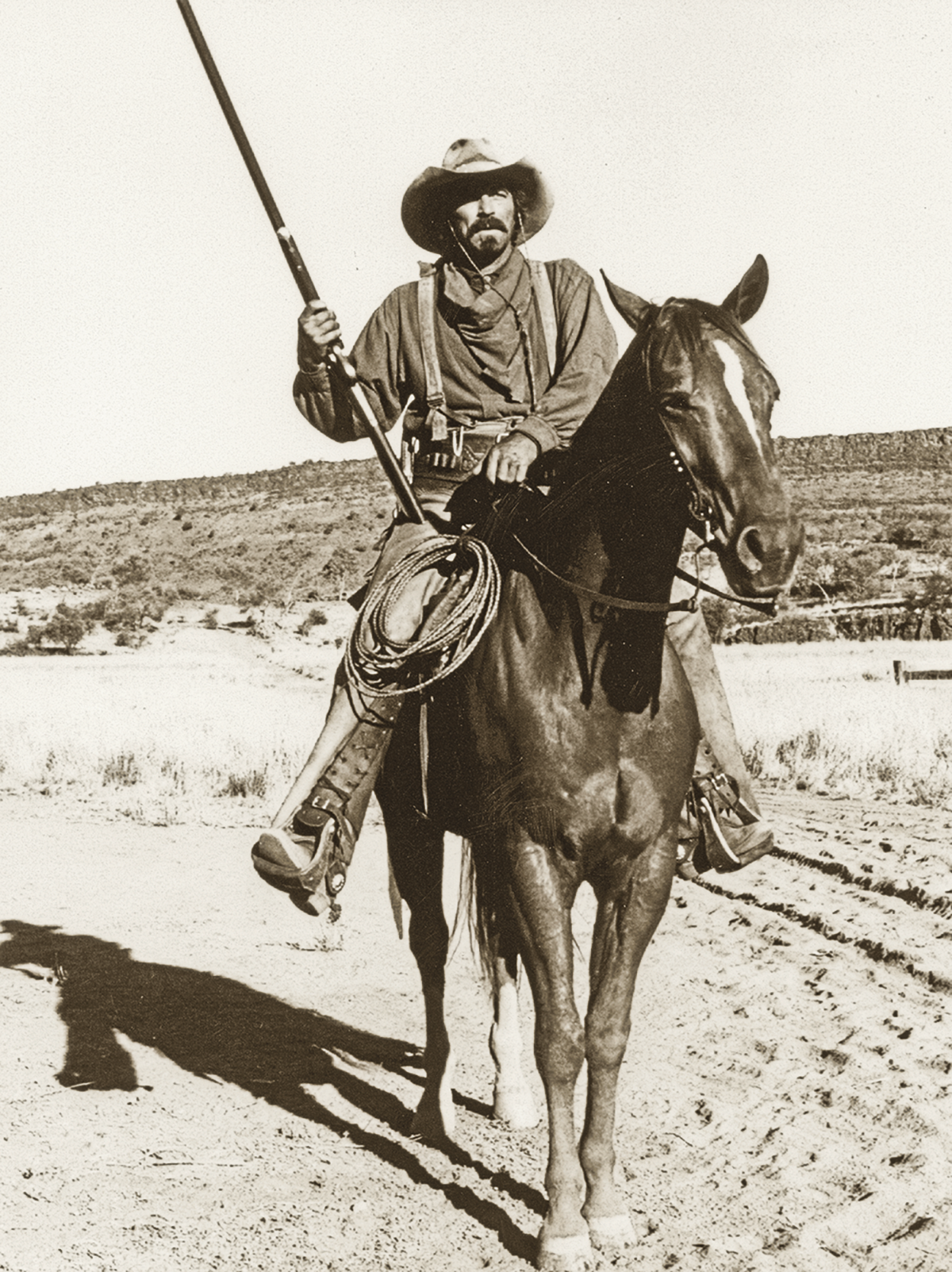
– COURTESY MGM –
“She was absolutely wonderful,” recalls Wincer. “A real pro, and filming with the flies and that heat is challenging. That sad speech, when she tells how she smothered the baby unknowingly—just wonderful.” For her part, San Giacomo loved working with the Aborigines, “And just the magic and the mystique of being in the Outback was pretty great,” she says. “Tom is a real gentleman, real considerate. I remember him being so proud of the detail that was in all the props and the guns. He loved that project, and he brought all of that with him.”
Wincer concurs. “Tom’s fantastic with all that, because he loves the detail, the minutia. And his Sharps rifle, when he first reveals
it, that’s a favorite scene of mine. And when he demonstrates with the bucket on top of the hill, telling the rider to keep going. Then the wonderful delay when you hear the almighty crack of the gun and even- tually the bucket goes hurtling up in the air!”
“That would have been a great John Wayne movie,” Selleck notes. “When you realize John Wayne could have done a better job, it’s a little intimidating. But every good part should scare you; put it that way. It was iconic; this guy was bigger than life. I worked very hard on it. I’m very, very proud of Quigley.” He also developed a great rapport with Spike, his horse in Quigley, who was big enough to look good with the tall actor astride. Given to Selleck after filming, Spike would co-star with him in Last Stand at Saber River, and spend the rest of his 30 years at Selleck’s ranch.
“Tom’s always such a stickler for having the right saddle, the right gun, the right horse,” recalls stuntman Walter Scott, who started doubling Selleck for a Rockford Files, and continued with The Sacketts and many more. “We got along great, and when I quit doing stunts, he would call me to coordinate his stuff.” Selleck’s next Western was Ruby Jean and Joe. Selleck explains, “It was a low budget movie about a washed-up rodeo cowboy,” who befriends Ruby Jean, a black teenaged hitchhiker. “It’s a nice, simple movie about redemption. My character has a problem with the bottle. His horse is lame; he puts it out to pasture, which is symbolic of himself, and he does it at his mentor’s ranch. I said, that has to be Ben Johnson. They say, we can’t afford Ben. I paid his salary out of my salary, because it wouldn’t have been the same.”
They shot Selleck’s rodeo sequence during a real Tucson rodeo. “There were 18,000 people in the audience,” Scott remembers, “He just wasn’t afraid of doing any- thing. I had a bulldogging sequence. I put Tom on a real bulldogging horse—he slid off the horse, he did it three or four times; it was great.”
Selleck remembers, “I used to bump into Ted Turner, and he’d say, ‘Let’s do a Western!’ Ted was very big on it.” Starting in 1997, Selleck would make three elegant theatrical-quality Westerns for TNT, each with a strong literary background: Last Stand at Saber River by Elmore Leonard, Crossfire Trail by Louis L’Amour, and Monte Walsh by Jack Schaeffer. “That was very intimidating; they’re all different to adapt. Louis’ stories, to make them filmic, you need to capture the spirit, but you had to make some changes. With Elmore Leonard, you could literally lift his dialogue off the page. And Jack Schaefer was just a great storyteller. Monte Walsh, I always wanted to do a sequel, because there’s so much more to it. He wrote Shane, but Shane was a short story. Monte Walsh was a great piece of work, but very intimidating to adapt.”
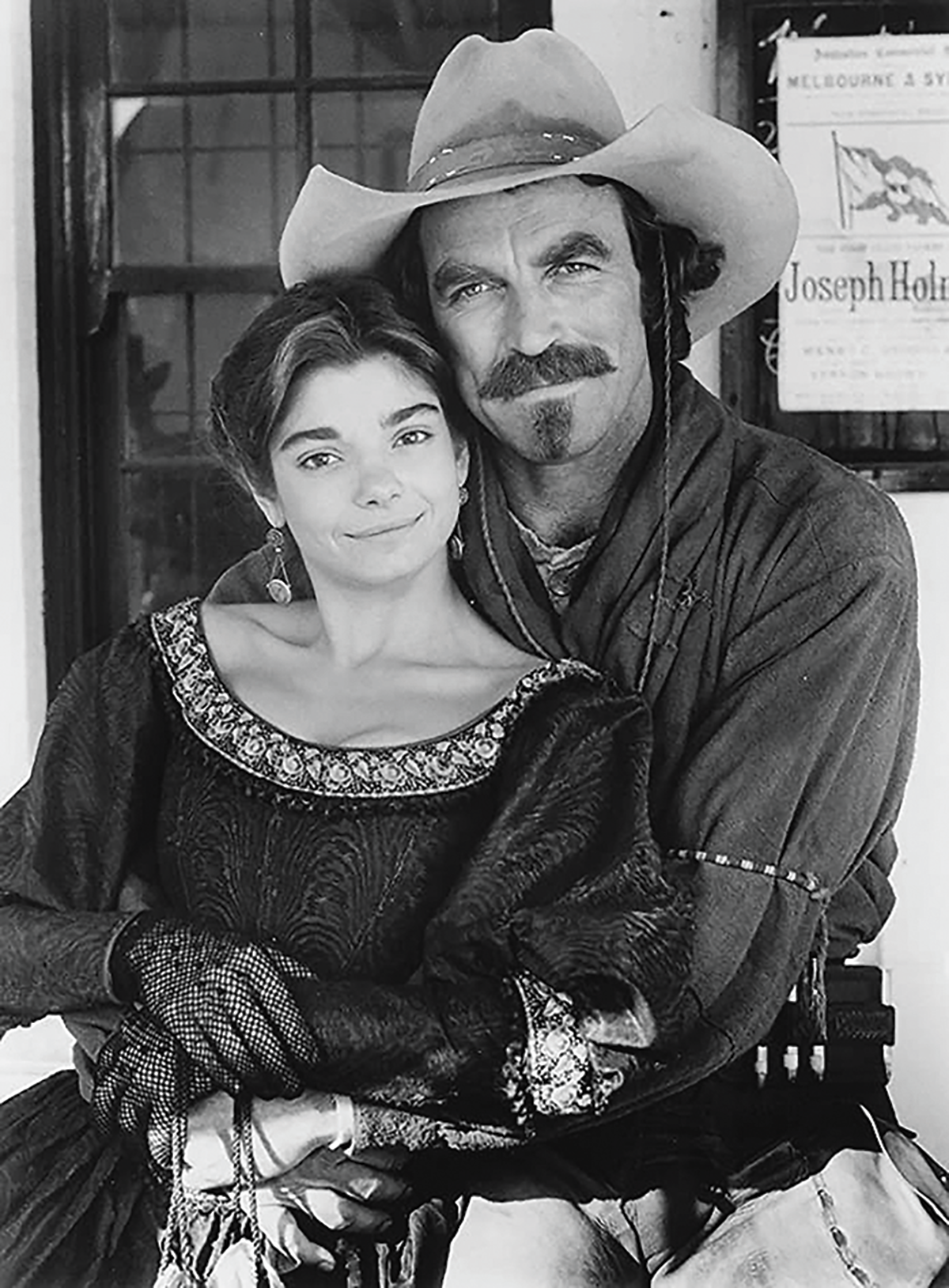
– COURTESY MGM –
A spectacular moment in Saber River is when Cable, Selleck’s character, riding after a runaway wagon with his daughter aboard, snatches her to safety just as the wagon flies over a cliff. They’d filmed it a couple of times, with Scott’s brother, Ben, doubling for Selleck, catching the small stunt-woman standing in for the daughter. “And now we’re getting ready to send the wagon over, with the team breaking loose,” Scott remembers, “and the director [Dick Lowry] said,
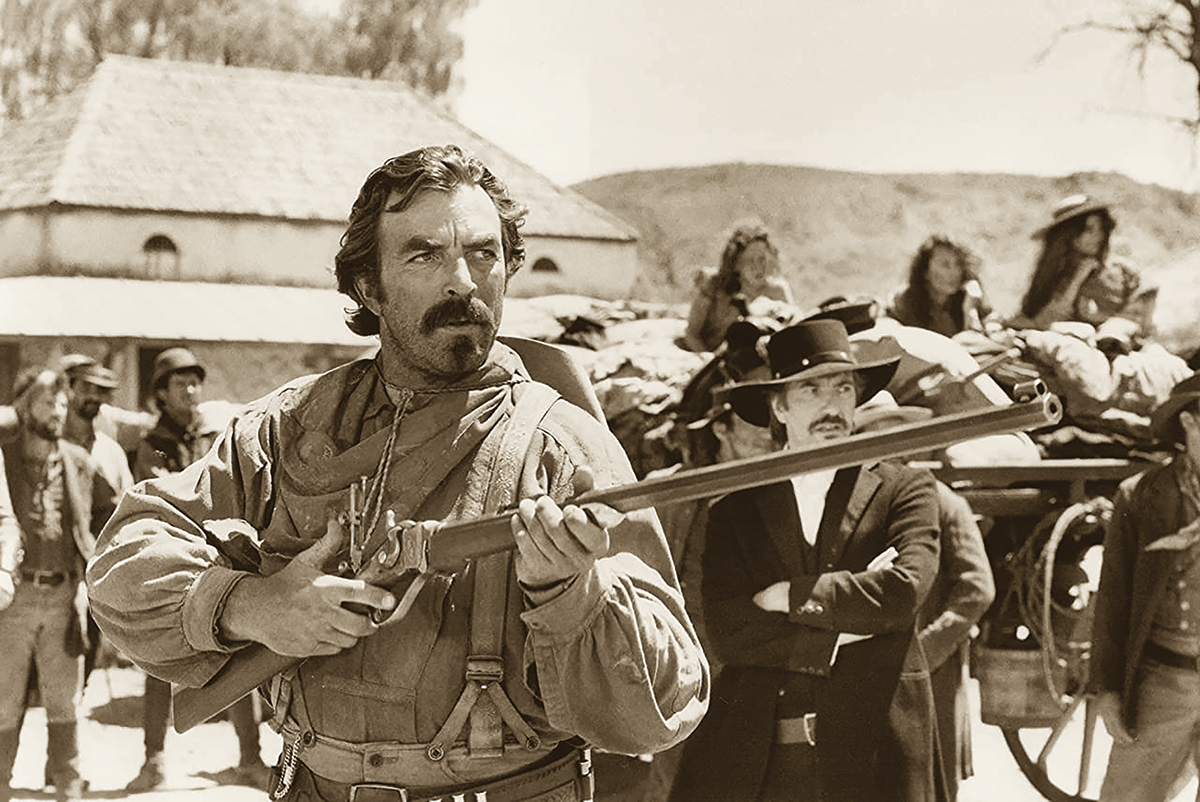
‘Wouldn’t it be great if you could get Tom to do it?’” Selleck saw them walk-ing his way, and he knew. “They’re going to ask me to do this. And sure enough, Walter says, ‘What do you think? One time.’ I said, ‘You think I can do this?’ And Walter said yes. And I trust Walter. I’ve trusted him with my life many times.” You can see it’s really Selleck, in close, as the girl jumps to his arms just before the wagon goes airborne.
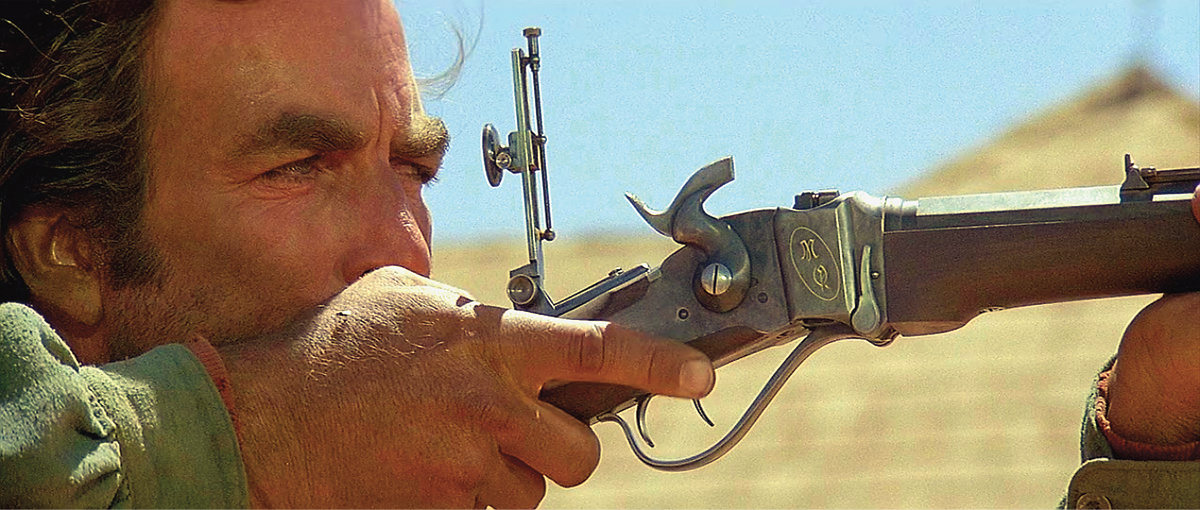
– PHOTOS COURTESY MGM –
“Tom would say, ‘Walter, why are you making me do this?’ ‘Because you can do it, and you know it always looks better if you have the actor doing the fight and everything.’ He threw good punches and did good fights.”
The third TNT Western was Monte Walsh. “You know, Monte Walsh wasn’t a gunslinger,” Selleck points out. “He was a cowboy in an era where the life is going away. And I just loved that. I have no problem bringing up the original with Lee Marvin; that movie really moved me.” Scott, who had worked on the original, had his doubts. “I said, how do you remake Monte Walsh? He said, ‘Well, I’ll put my twist on it.’ I didn’t think anybody could do Monte Walsh justice like Lee Marvin, but Tom Selleck damn sure pulled it off—he did a hell of a job.”
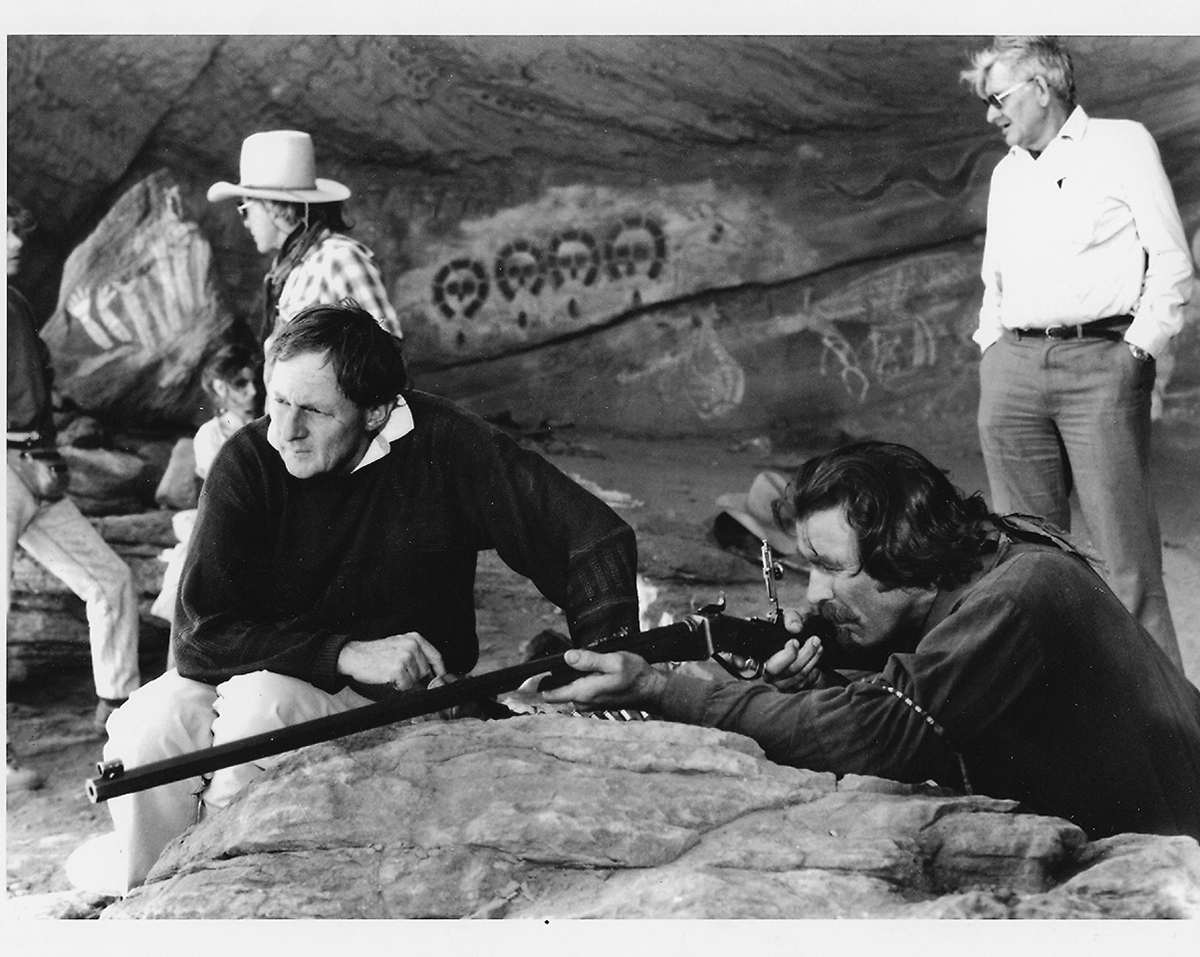
Monte Walsh got off to a shaky start. Robert Carradine, who played one of the Slash-Y cowboys, remembers, “It was our third day, and all the hands and Tom and Keith [Carradine] are gathered on this hilltop looking down on a group of maybe 20 mustangs, and every time we fire this shot, the mustangs scattered, and we have to spend half an hour gathering them all. So we’re all set up to do another take and the director says, ‘Can we move that herd about five feet to the left?’ And Tom Selleck says, ‘Why don’t you move the camera one inch to the right?’” They were already behind schedule, and needed a new director fast. Wincer was suddenly available, and he took over immediately. “Half the locations chosen for the film, I’d never seen. I’d just have to turn up on the day and do it. Monte Walsh, it’s a real favorite of mine because it’s about the coming of wire, the end of the cowboy era, and how it affects these different characters in many different ways.”
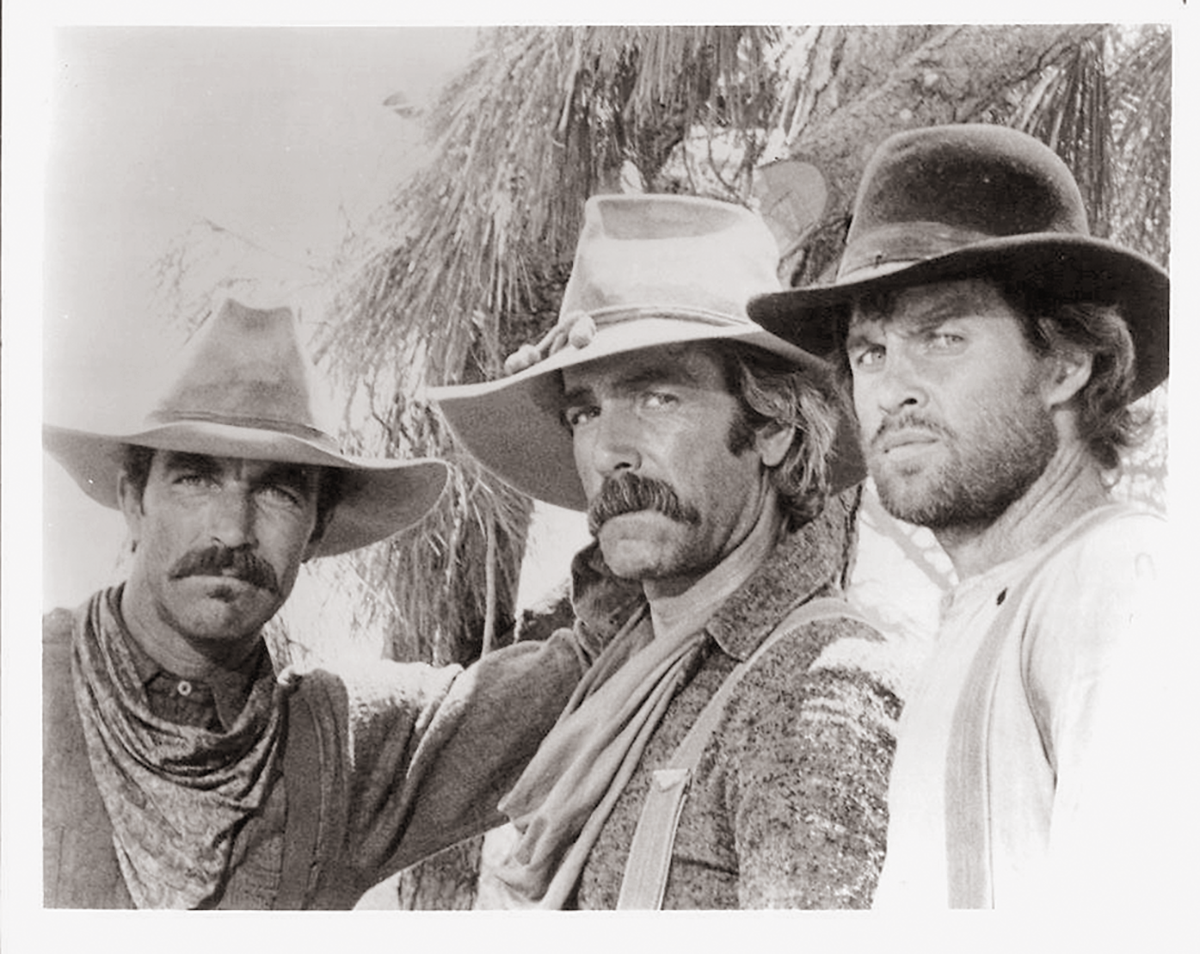
– COURTESY NBC –
Robert Carradine contributed much more than a fine performance. Selleck remembers, “Bobby is the guy who said day one, in front of all the Slash-Y cowboys, ‘The set’s where it’s at. Nobody goes to the trailer.’ And he set that ethic.”
Carradine elaborates, “We’re not in every scene, the cowhands, and I said, ‘Look, why don’t we get these guys to come out every day, get into wardrobe, and just ride around and do sh*t in the background like they would be doing in the real deal? Why use extras when we have the real guys here just sitting around?’”
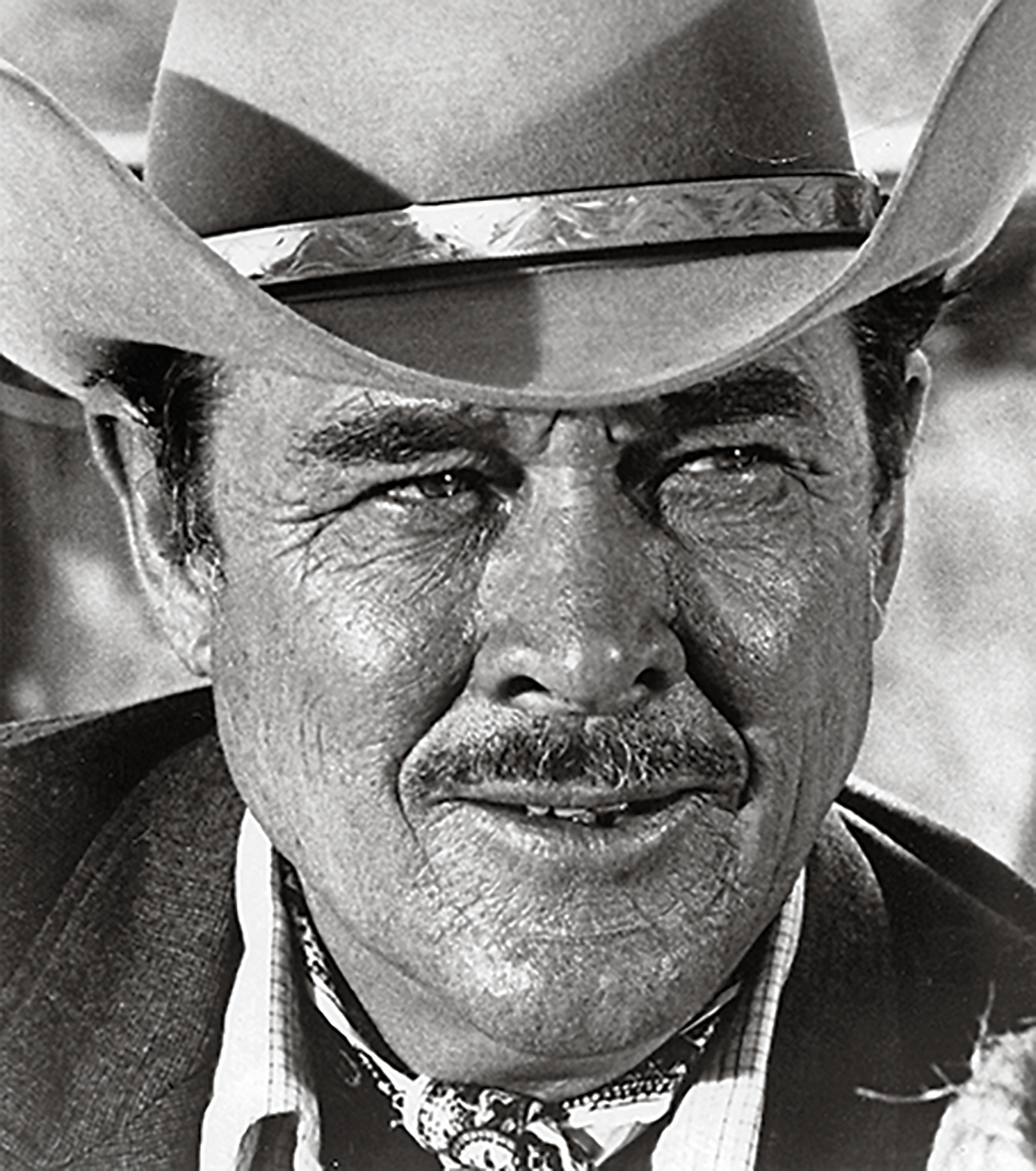
– COURTESY ABC PICTURES/ROSEBROOK FAMILY COLLECTION –
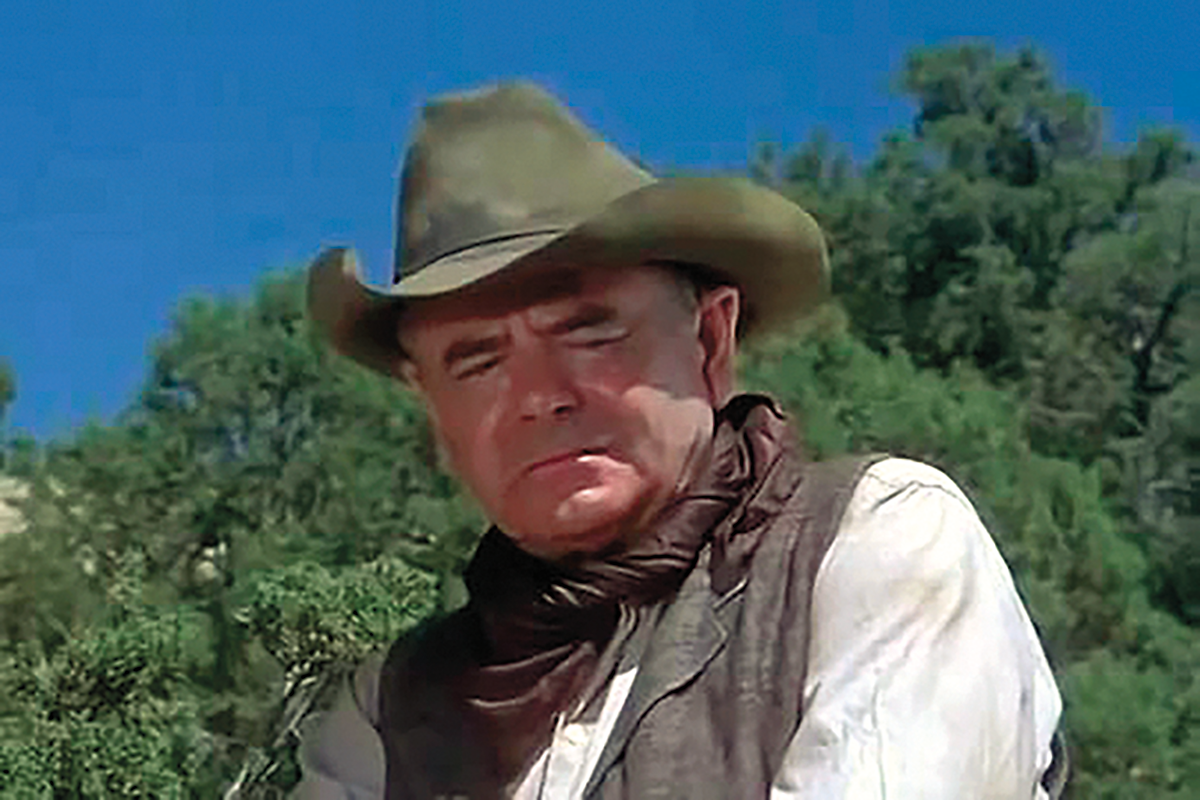
Little did anyone guess that Monte Walsh would be the end of an era for the filmmakers as well as the characters. Selleck explains, “We had another one planned for TNT, Empty Land, by Louis L’Amour. And a new management came in at Turner, and it just went away.” Certainly Selleck has been busy. He’s currently shooting Season 11 of Blue Bloods, and developing the next of his annual Jesse Stone movies, but, he says, “Nobody’s ringing my doorbell or phone, offering me all sorts of Westerns.”
Walter Scott opines, “I wish Tom and Sam Elliott would do one more Western. We got one more in us. There’s a great one called Ride the High Country, that Joel McCrea and Randolph Scott did. I say, you two guys would be perfect in that.”
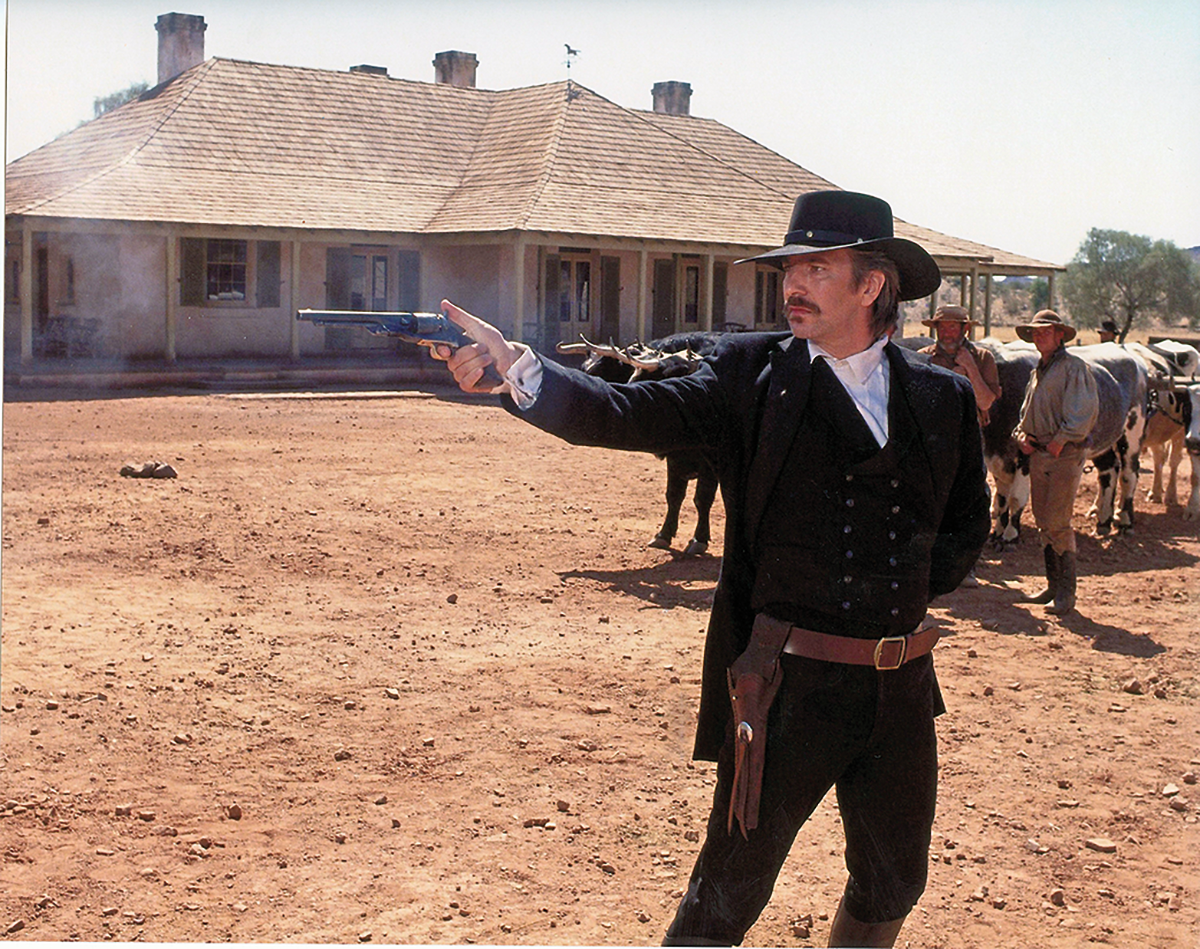
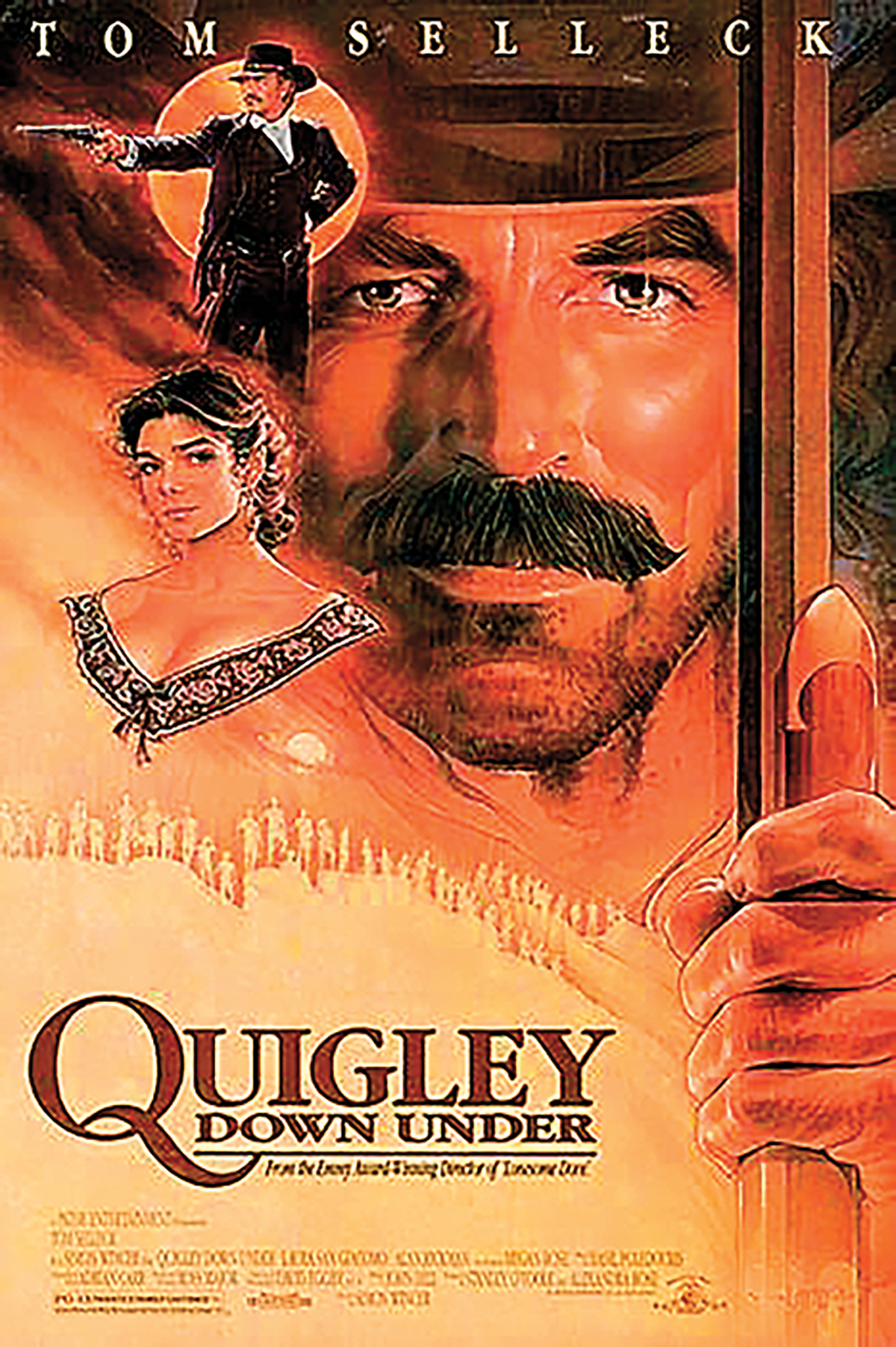
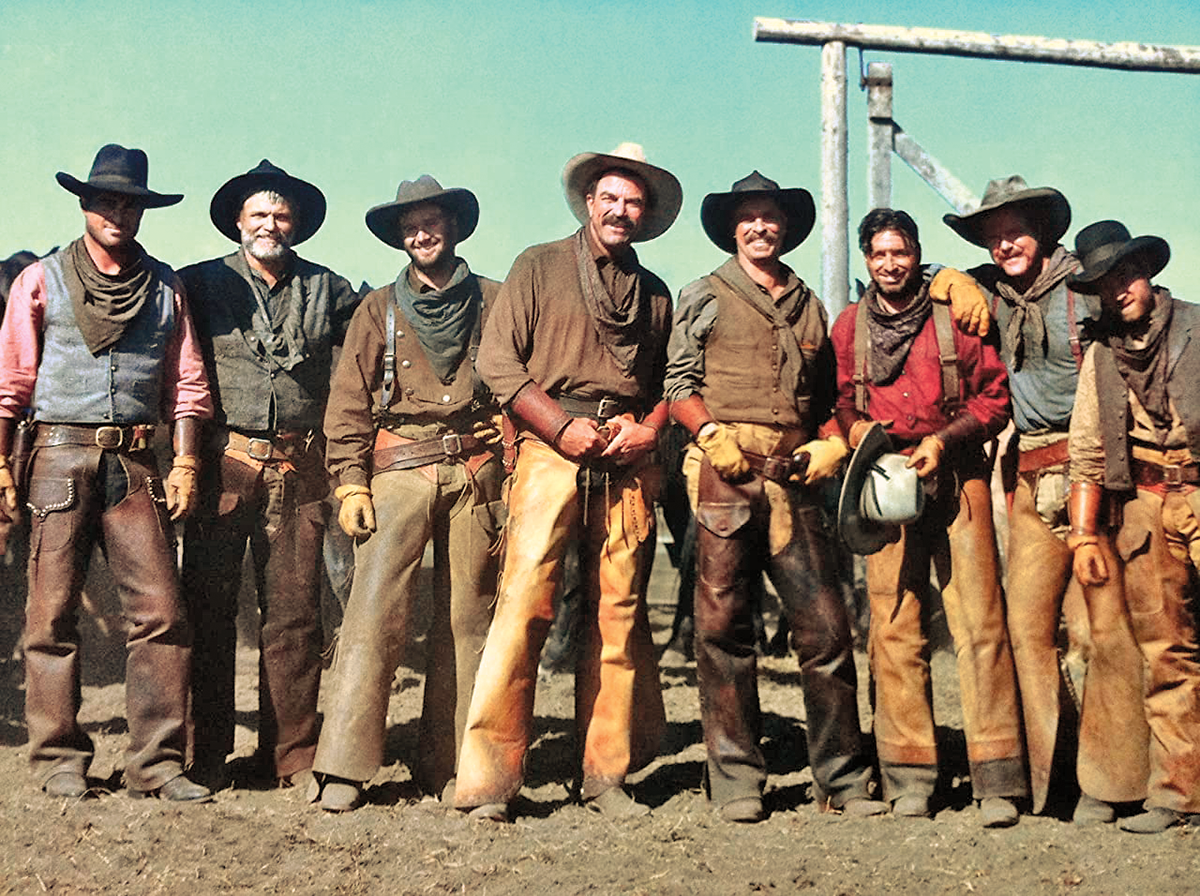
– COURTESY TNT –
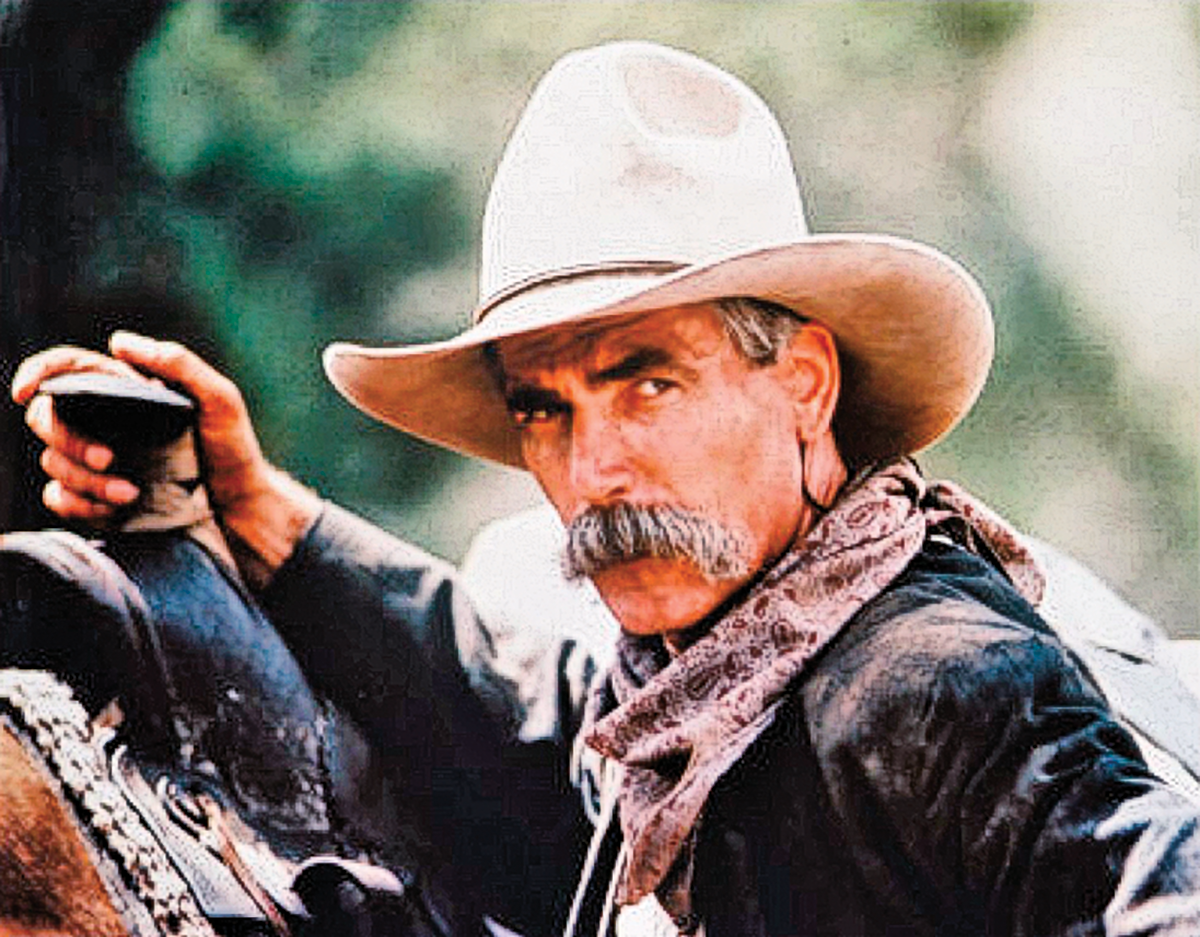
– COURTESY BUENA VISTA PICTURES –
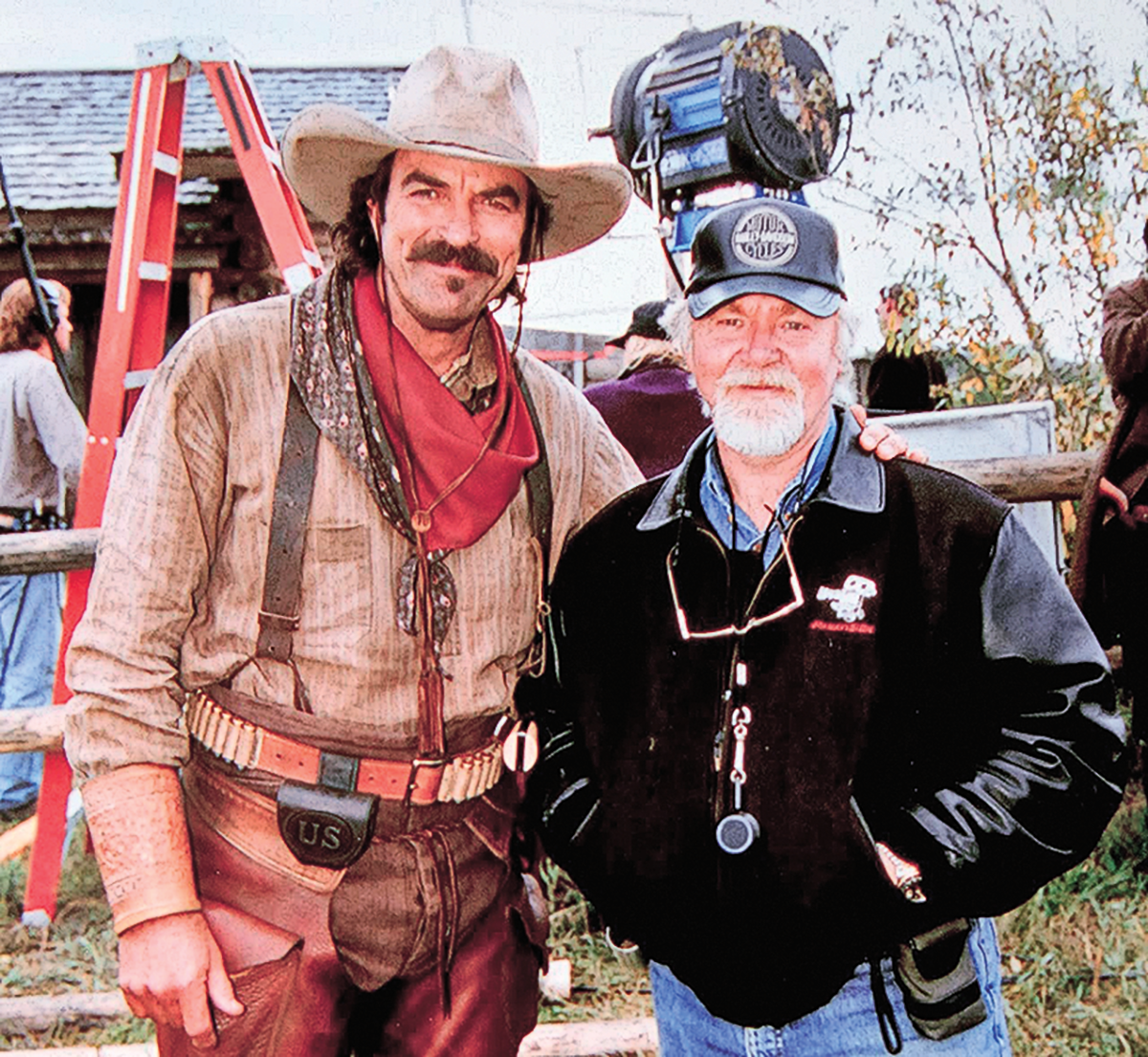
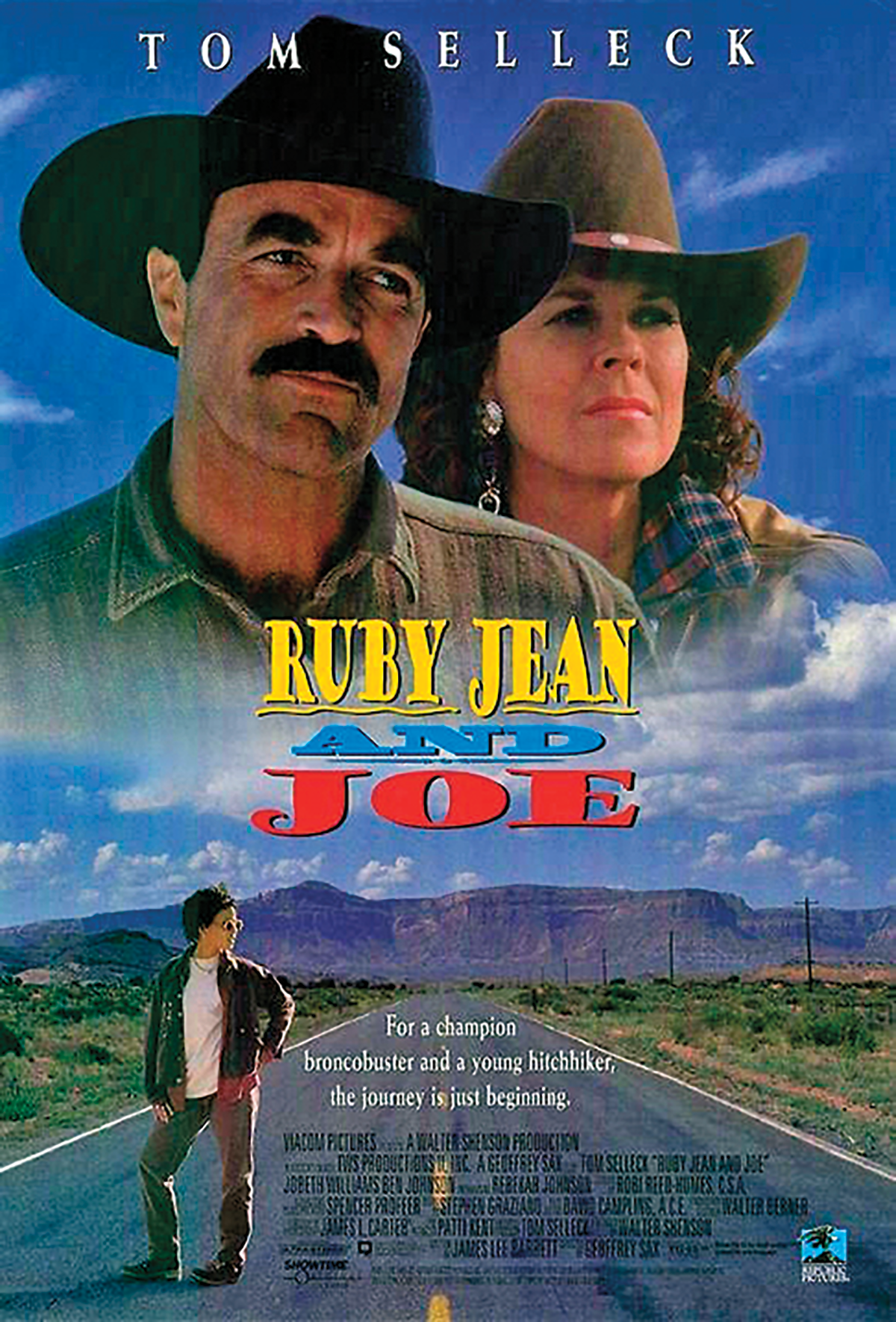
– COURTESY SHOWTIME –
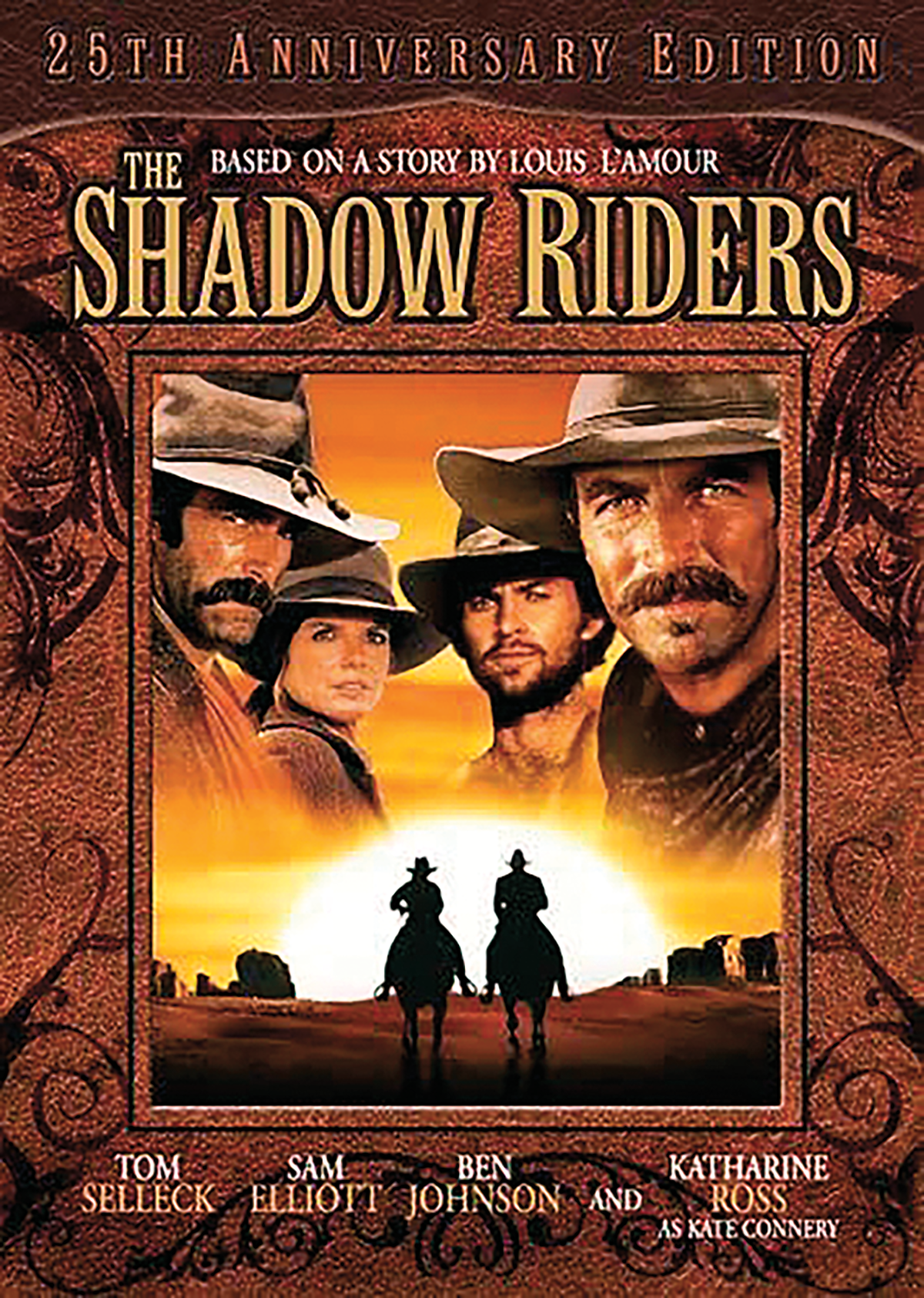
– COURTESY CBS –
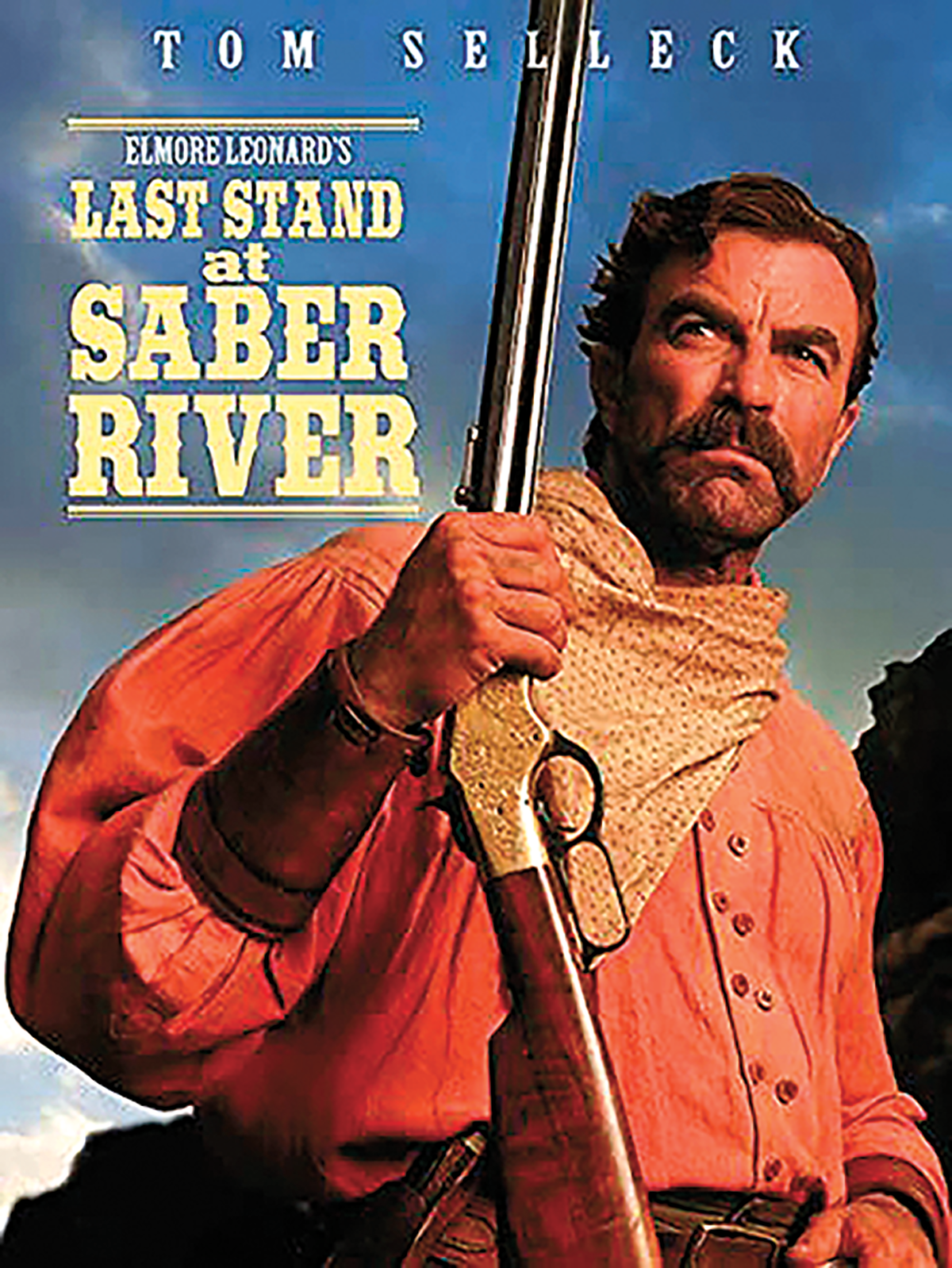
– COURTESY TNT –

